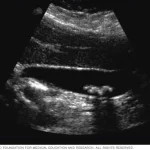Ultrasound Department
The Ultrasound Department is a vital part of modern healthcare, offering a safe and versatile imaging modality that aids in diagnosing and monitoring a wide range of medical conditions. It is a critical component of patient care in hospitals and outpatient medical facilities.
Here are the key functions and services provided by the Ultrasound Department:
Ultrasound Imaging: The primary function of the department is to perform ultrasound examinations to visualize and evaluate various parts of the body, including but not limited to:
- Abdominal organs (e.g., liver, gallbladder, kidneys)
- Pelvic organs (e.g., uterus, ovaries, prostate)
- Obstetric and gynecological examinations (e.g., fetal ultrasounds)
- Vascular studies (e.g., Doppler ultrasound to assess blood flow)
- Musculoskeletal imaging (e.g., joints, tendons)
- Cardiac imaging (echocardiography)
- Thyroid and breast examinations
Diagnostic Imaging: The ultrasound department plays a critical role in diagnosing various medical conditions, such as detecting tumors, assessing the health of organs, evaluating pregnancy progression, and identifying vascular abnormalities.
Prenatal Care: Obstetric ultrasound is a common service provided to monitor the development of the fetus during pregnancy. It allows healthcare providers to assess fetal growth, detect anomalies, and determine the gender of the baby.
Guidance for Procedures: Ultrasound is often used as a guide for various medical procedures, such as needle biopsies, drainage procedures, and catheter placements. It helps healthcare professionals precisely target specific areas within the body.
Pediatric Ultrasound: The department also performs ultrasound examinations on pediatric patients, addressing specific concerns related to child and infant anatomy.
Emergency and Critical Care: Ultrasound can be used in emergency settings, such as the assessment of trauma patients, to quickly evaluate injuries and guide surgical interventions.
Patient Comfort: Ultrasound is a non-invasive and painless imaging method, making it well-suited for patients who may be uncomfortable with other imaging techniques.
Technological Advancements: The Ultrasound Department keeps up with technological advancements in ultrasound equipment, ensuring that patients receive the most accurate and reliable diagnostic images.
Radiologic Technologists: Highly trained ultrasound technologists or sonographers perform ultrasound scans, ensuring the quality and safety of the procedure.
Interpretation and Reporting: Radiologists and physicians interpret the ultrasound images and provide detailed reports to referring healthcare providers, assisting in the diagnosis and treatment of patients.



